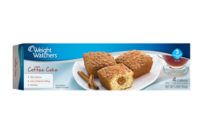![]()
SOY Salvation
By Martin Schultz
The surging market for soy-based ingredients reflects both consumer demand for healthier food products and bakers’ growing awareness that such demand represents a golden opportunity.
Almost three-quarters of those who consume soy products do so because they are aware of soy’s health benefits. This is just one of the findings to emerge from an online survey involving attendees at the 11th annual soy symposium. Some 68% of respondents said they consumed soy products as part of their regular diet and 50% of those polled noted that they consume soy products because they like the taste.
Consumers’ growing demand for soy products is expected to increase 5.4% per year to $8.6 billion in 2007, according to a study on soy products by the Freedonia Group, a market research company.
The result is that despite the fact that soybeans have witnessed steep increases in their price to market recently, soy continues to offer bakers and snack food producers a wealth of reasons to use it in their processes.
Indeed, soy retains the title of being among the most versatile ingredient products on the market. From meat-free jerky to snack foods, soy offers an almost inexhaustible range of applications, including soy pasta and soy juices, soy snacks and soy cheeses.
Consumers who regularly use soy purchase it because they believe it reduces the symptoms of menopause, osteoporosis, heart disease, and cancer. With such consumer pressure, soy ingredient manufacturers have found new ways to help their soy products jump on various health bandwagons. For example, soy has increased the many ways in which it is incorporated into low- and no-carb food products. Bakers may be in the best position to benefit from the explosion of soy ingredients. Consumers tell food market researchers that out of 100% of products containing soy ingredients, they would like to see soy in baked goods 45% of the time. Only snack products, at 49%, come out.
And the proof lies in the surge of new soy-baked products reaching the supermarket aisles. For example, a new range of soy muffin mixes, including bran, banana nut and blueberry, is now available. Another example of a breakthrough soy ingredient is the soy protein produced by the Solae Company. Soy protein is a high-quality, complete plant-based protein ingredient that is fat and cholesterol free.
“One of the nice things about soy,” says Geri Berdak, manager of public affairs at the Solae Co., “is that soy ingredients combine functional with health-promoting benefits.”
This is particularly necessary when it comes to providing soy alternatives to the baking industry. “With bakery goods, for example, texture is such an important issue, plus flavor,” Berdak explains. While there’s a lot of experimenting going on to find a texture substitute for gluten, for example, there’s much more flexibility when it comes to, say, developing a high-quality soy ingredient for use in pizza crust.
Low carb is obviously at the top of every baker’s list for formulation alternatives. Trans fat is yet another nutritional foe of bakers and snack food producers alike. With the Food and Drug Administration (FDA) set to require food manufacturers to report its presence on nutrition labels in 2006, ingredient producers have dramatically increased their research budgets to develop low- and zero-trans fat products.
Developing oils that contain zero trans fat is a goal that has been occupying the best research minds of ingredient producers and they have produced a range of soy-based oil products that are being rapidly incorporated into baked good formulations.
This is among the primary reasons why soybean oil remains the largest category of soybean products on the market. Consumers consider soybean oil to be among the healthiest of all vegetable oils and rank it higher than canola and sunflower oil, according to a consumer survey quoted by the United Soybean Board. The Board noted that liquid soybean oil is among the healthiest of all edible oils and has a very favorable fatty acid profile. Several soybean producers, including ADM, have come out with low-trans and zero-trans soybean-based oils.
“ADM is very proactive on both the soy lipid and protein fronts,” says Bob Rasmus, soy protein isolate product manager. ADM has invested heavily in improving chemical interestification technologies, the result of which is to provide an option for reducing the melting point and heightening the stability and creaminess without producing trans fatty acids. Using enzyme-modified oil, ADM is then in a position to “create blends for particular formulations,” Rasmus points out.
ADM’s NovaLipid line has achieved global prominence among bakers and snack food producers because customers like its convenience. “You don’t have to change out equipment [to create a new, soy-based formulation]. We can change our formulation to suit your needs,” Rasmus explains.
The USB has been instrumental in the production of superior soybean varieties that contain enhanced characteristics. These include a low linolenic profile and reduced need for hydrogenation and mid oleic profile. As the USB notes, ultimately, soybean breeding projects will lead to the development of soybean oils that do not require hydrogenation.
One such project to develop new soybean varieties producing oil that doesn’t need to be hydrogenated is underway at Iowa State University. The oil has passed critical laboratory tests for frying and flavor stability. Soybeans typically produce oil with seven percent linolenic acid. Iowa State’s new soybean oil has only one percent linolenic acid.
This year, the one percent linolenic soybeans were planted and in early November 210,000 pounds of crude oil were extracted from the harvested soybeans.
Growing manufacturing interest in healthier versions of soybean products is the kind of good news consumers have been hankering for. And if consumers like it, bakers and snack food producers are not likely to be far behind.

